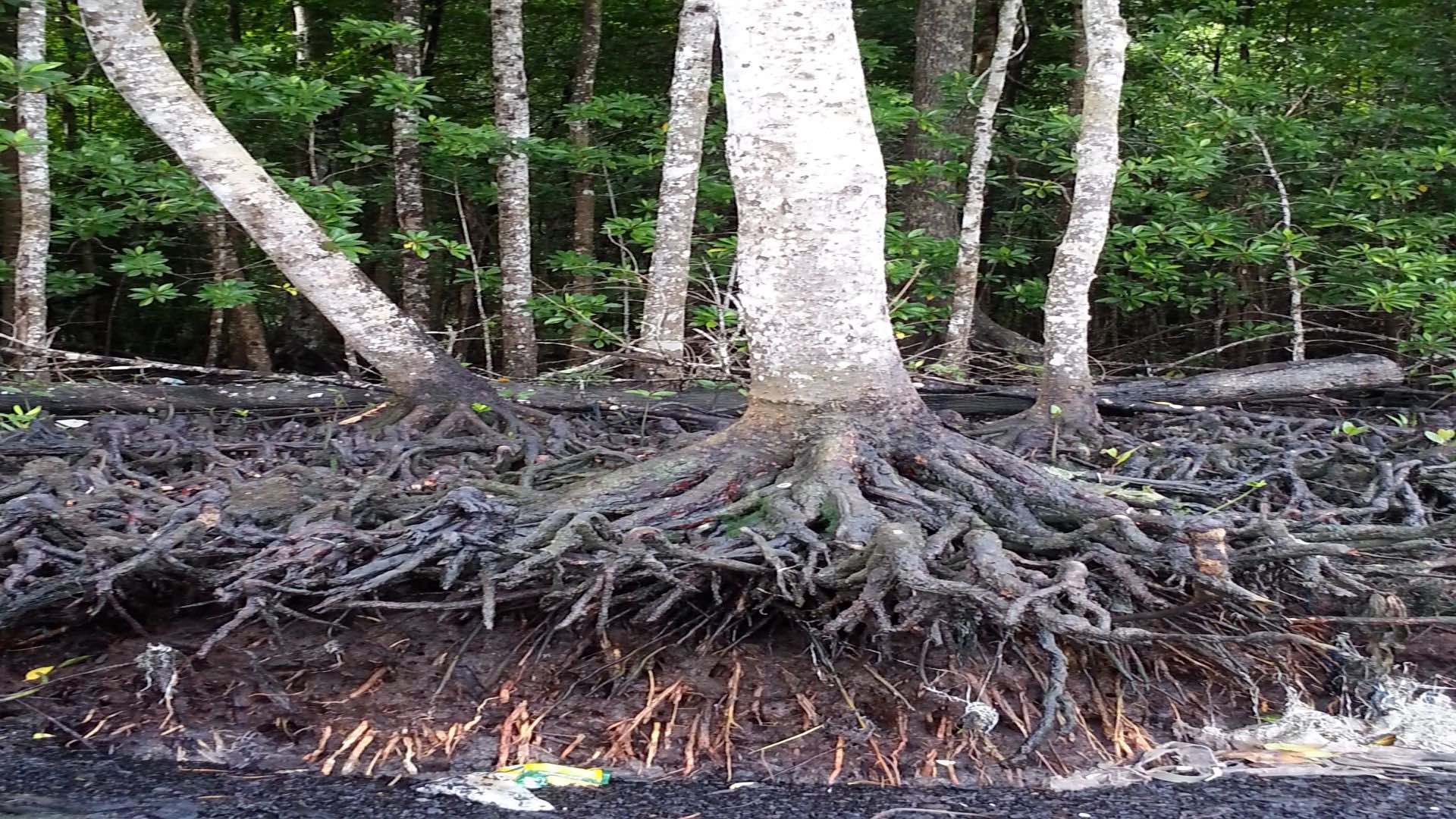Mangroves are woody plants and shrubs that grow in saline and brackish water and are situated in the coastal intertidal zone. Around 80 mangrove species are found in 118 tropical and subtropical countries globally. They have evolved to live in a salty and low-oxygen environment. For their survival they have propped root system, which acts an anchorage, and helps during high tide and flooding. The dense root system provides natural protection from storms and floods for the mangrove dependent communities. The dependency of the local community on mangroves cannot be overlooked. They rely on mangroves for food, shelter and fire. Mangroves propagate and support a variety of plants and animals in their habitat like fish, crabs. They are also a breeding ground for migratory and nesting birds.
Mangroves have the capacity to store ten times more carbon than terrestrial forests. Due to its carbon sequestration potential and greenhouse gas offsets, this ecosystem has earned prominence as a nature-based solution in climate change mitigation. The carbon stored by these coastal ecosystems is called “Blue Carbon” and it deals with three key ecological units: mangroves, salt marshes and sea grass meadows. The captured carbon is stored in leaves, roots, soil and sediment. In the last decade the term “Blue carbon” has gained recognition in the scientific and business community due to its carbon offset potential. Here is important to define and explain the term “Carbon offset”. Carbon offset or carbon credit are somewhat similar as they both deal with GHG reduction. Specifically for blue carbon, the term carbon offset is used. Marketing and business industry are more accustomed with carbon credit, however as a buyer, it is important to differentiate between carbon credit and carbon offset. I don’t want to confuse the readers about these terms, later it can be articulated separately. Here it is crucial that for blue carbon we use the term carbon offset as it will be transacted in the “voluntary carbon market”. Carbon offset correlates with carbon sequestration where one carbon offset is equal to one ton of carbon emission. Once a carbon offset is purchased, one ton of CO2 can be released into the atmosphere, after which this particular carbon offset considered as retired, as it cannot be sold or purchased. Carbon offsets are generated by independent companies or organisations that capture CO2 from the atmosphere. Such organizations then sell the offsets to industries or other companies that might have a high carbon footprint, or in other words to high CO2 emitters. In short, CO2 emitters are the donors of offset generating companies. Here, it will be noteworthy to know that currently in the international market, one carbon offset is equal to 4.18 US$.
Let’s discuss briefly how offsets are generated. First an area is designated for afforestation. Then the carbon that will be sequestered by this afforestation is calculated. Followed by that these carbon credits or carbon offsets are sold to the companies which are emitting CO2 in the atmosphere. Wow, you have made the money.
However, it’s not easy as it looks like. In the race of producing carbon offsets, most of the companies realize that carbon offset market is chaotic and unsustainable. The quantification and verification process is complex due to non-availability of standards and lack of interest and regulation by government. Few independent agencies are working on quantification and verification standards to make this process easy. Here it is important to mention the name of agency “Verra” who is contributing significantly for making the carbon standards. Nonetheless few competitor agencies are pointing fingers at Verra’s carbon standards. Nori and Gold standard companies have their own carbon footprint calculator. One can give in their carbon footprint information and in result you will get how many carbon credits or carbon offsets you need to fulfil your requirements. These broker companies also helped to sell the carbon credits of few projects like the famous Trey Hill project. It is not wrong by saying this, the future of this carbon industry is bright.
In terms of blue carbon offsets, mangroves have great potential. But due to its degradation, it is estimated that 1 billion tons of carbon is emitted in the atmosphere annually. In the context of Malaysia, mangroves cover 577,558 hectares of area (ha) which has the potential to sequestrate approximately 593 million tonnes of CO2. With this perspective Malaysia has great potential for carbon business. Recently, Indonesia has received 20.9 million US$ in carbon reducing mechanism by forest carbon partnership facility, world bank. Such success stories of getting carbon reducing money in the Asia pacific countries, Indonesia is gaining fame among the Malaysian decision makers as well. Malaysian Leaders, specifically Premier Sarawak Datuk Patinggi Tan Sri Abang Johari Tun Openg is aiming his best to initiate carbon research and business for Sarawak.
By looking at the recent need, a research group, “Blue Carbon and Mangroves” is established in Universiti Putra Malaysia, Bintulu Campus (UPMKB) Sarawak. The following General Objectives have been kept in mind:
- To assess the carbon storage potential in Malaysian mangroves, salt marshes and seagrasses
- To help in developing strategic policies for blue carbon to assist government and private organisations in the blue carbon business
Sarawak is second largest state in terms of mangrove coverage that magnifies its blue carbon potential for carbon offset. By appreciating research vision and raising political unity, it is possible to achieve significant blue carbon offset for Sarawak. In this mission, “Blue Carbon and Mangrove” research group and Dr. Azlizam Bin Aziz (UPM Holdings) are working closely to secure grants from National and International donors to work on blue carbon offset research to give financial benefit to Malaysia.


